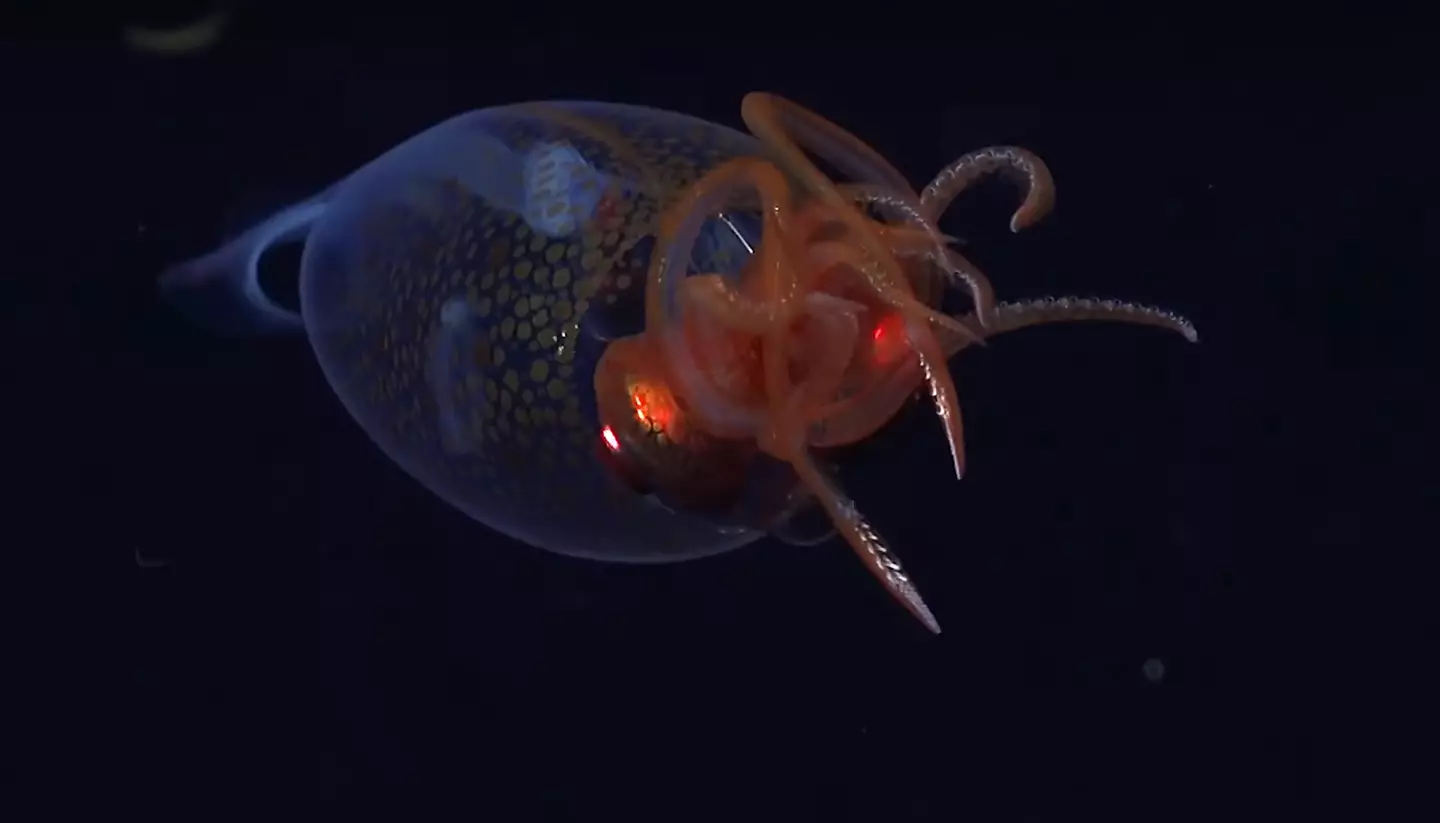
After more than a hundred years of searching, scientists have finally captured a mysterious sea creature in its natural habitat and it's truly magnificent.
On 9 March, scientists aboard the Schmidt Ocean Institute's research vessel Falkor captured a colossal squid at a depth of 600 metres (1,968 feet) with a remotely operated vehicle (ROV) named SuBastian. The squid in question was a juvenile measuring about 30 centimetres (11.8 inches) long and was spotted near the South Sandwich Islands in the South Atlantic Ocean.
In the footage, led by a University of Essex academic, the translucent squid can be seen slowly swimming through the pitch-black ocean depths, with its delicate tentacles floating behind it.
Advert
"It's exciting to see the first in situ footage of a juvenile colossal and humbling to think that they have no idea that humans exist," said Kat Bolstad, a squid researcher at the Auckland University of Technology in New Zealand who verified the finding. "For 100 years, we have mainly encountered them as prey remains in whale and seabird stomachs and as predators of harvested toothfish."
Until now, most of what we’ve known about colossal squid (Mesonychoteuthis hamiltoni) has come from remains or dead squid caught by fishing boats.
Chief scientist Dr. Michelle Taylor said while the team was initially unsure what the squid was, they filmed it because it was 'beautiful and unusual.'
Advert
Larger than the more famous giant squid (Architeuthis dux), colossal squid are considered the largest invertebrates on Earth.
Fully grown, they can reach up to 14 metres (46 feet) in length and weigh around 1,100 pounds (500 kg).
Interestingly, these mysterious sea creatures also have the largest eyes in the animal kingdom that measure up to 27 cm (11 inches) across, which is about the size of a football. They live deep beneath the Antarctic waters of the Southern Ocean. The deeper they live, the older they tend to be.
It’s been exactly 100 years since the colossal squid was first officially identified - but very few have been spotted.
Advert

This discovery follows a previous expedition success in January that captured the first-ever confirmed footage of the glacial glass squid (Galiteuthis glacialis). "The first sighting of two different squids on back-to-back expeditions is remarkable and shows how little we have seen of the magnificent inhabitants of the Southern Ocean," said Jyotika Virmani, Schmidt Ocean Institute's executive director.
Dying adults have previously been filmed by people fishing, but have never been seen alive at depth. The first complete specimen was captured in 2007 by a fishing vessel near Antarctica. The Natural History Museum has also stated the difficulty in estimating the global population of colossal squids.
"These unforgettable moments continue to remind us that the ocean is brimming with mysteries yet to be solved," Virmani added.